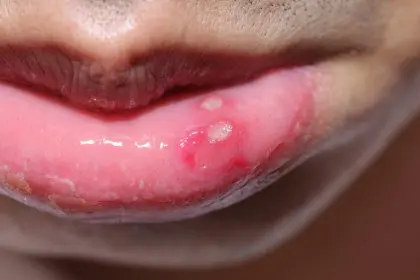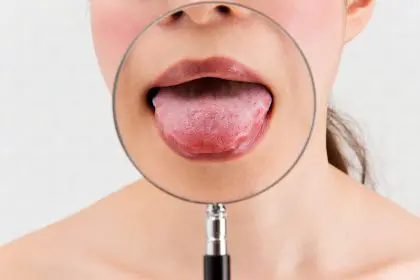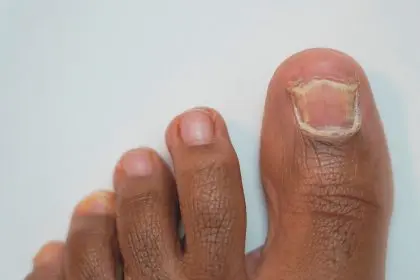The tongue serves as an important diagnostic tool in oral health assessment. Regular tongue examination can reveal early signs of various health conditions, from minor infections to more serious systemic issues requiring immediate medical attention.
Color changes and oral health
A healthy tongue typically appears pink with a light coating. Variations in color often indicate underlying health conditions that require attention:
White patches or coating can signal oral thrush, a fungal infection commonly occurring in those with compromised immune systems. This condition requires antifungal treatment to prevent spread and discomfort.
Yellow discoloration often indicates bacterial overgrowth or poor oral hygiene practices. This condition may accompany dry mouth syndrome, which increases risk for dental decay and gum disease.
Bright red coloration may signal nutritional deficiencies, particularly in B vitamins or iron. This condition affects tongue tissue health and requires dietary assessment and possible supplementation.
Black or brown discoloration typically results from tobacco use, certain medications, or poor oral hygiene. These changes may become permanent without intervention and lifestyle modifications.
Texture abnormalities
Tongue texture provides crucial information about oral and systemic health:
Smooth, glossy surfaces often indicate nutrient deficiencies, particularly in iron-deficiency anemia. Loss of normal tongue papillae affects taste sensation and requires medical evaluation.
Deep fissures or cracks may develop from chronic dry mouth or aging. While some fissuring occurs naturally, excessive cracking can trap bacteria and require additional hygiene measures.
Hairy tongue appearance results from elongated papillae trapping debris and bacteria. This condition, while usually harmless, indicates need for improved oral hygiene and possible lifestyle changes.
Pain and inflammation
Tongue discomfort often signals active infection or tissue damage:
Canker sores develop from minor injuries, stress, or immune system responses. These painful lesions usually heal independently but may indicate underlying health issues if persistent.
Burning sensations without visible cause may indicate nerve dysfunction or hormonal changes. This condition requires medical evaluation to determine appropriate treatment approaches.
Sharp pain or persistent soreness warrants immediate examination to rule out serious conditions including oral cancer, particularly when accompanied by unexplained lumps or lesions.
Swelling patterns
Tongue swelling provides important diagnostic clues:
General enlargement may indicate allergic reactions, thyroid dysfunction, or other systemic conditions. Rapid swelling requires emergency evaluation to prevent airway compromise.
Localized bumps or masses should undergo professional examination to rule out concerning growths. While most prove benign, early detection of serious conditions improves treatment outcomes.
Swollen taste buds typically resolve naturally but may indicate local irritation or infection when persistent. Chronic inflammation requires evaluation to determine underlying causes.
Surface coating significance
Tongue coating characteristics help assess oral health status:
Thick white coating often indicates decreased oral hygiene effectiveness. This condition promotes bacterial growth and contributes to halitosis and gum inflammation.
Patchy coating patterns may signal geographic tongue, a benign but chronic condition requiring monitoring. This condition can cause temporary discomfort and taste changes.
Persistent thick coating resistant to cleaning may indicate systemic health issues affecting oral environment. These changes warrant medical evaluation, particularly when accompanied by other symptoms.
Professional evaluation guidelines
Health care providers recommend seeking evaluation for:
- Persistent color changes lasting beyond two weeks
- Unexplained pain or swelling
- Difficulty with eating or speaking
- Unexplained bleeding or sores
- Progressive texture changes
- Sudden coating changes
Preventive measures
Maintaining optimal tongue health requires:
Daily gentle cleaning with appropriate tools and techniques. Regular professional dental examinations including tongue assessment. Adequate hydration and balanced nutrition supporting oral tissue health.
Moving forward
Regular tongue examination provides valuable health insights when combined with professional care. Understanding normal tongue appearance helps identify concerning changes requiring attention.
This simple self-examination practice contributes to early detection of oral health issues, potentially preventing serious complications through timely intervention and treatment.
This story was created using AI technology.














